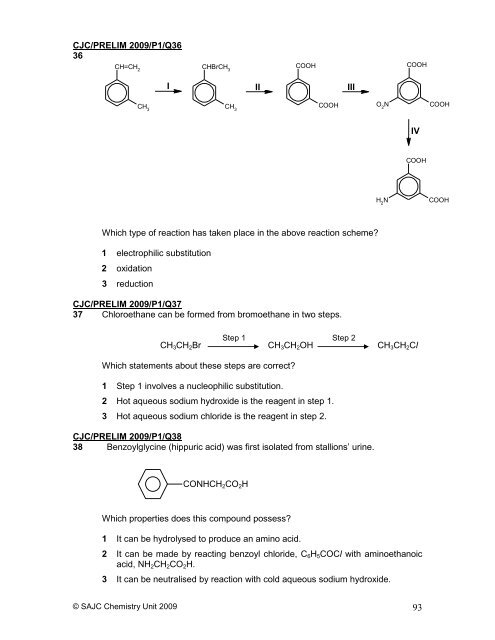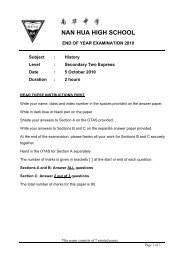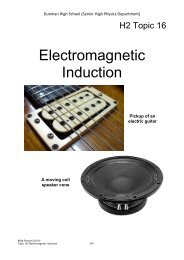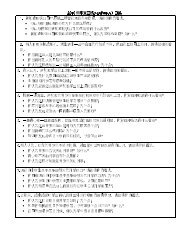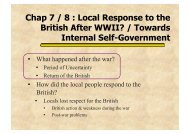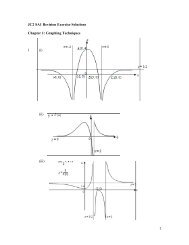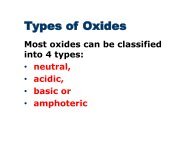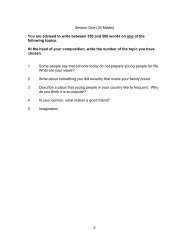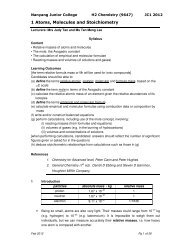Papers included in this bank - ASKnLearn
Papers included in this bank - ASKnLearn
Papers included in this bank - ASKnLearn
- No tags were found...
You also want an ePaper? Increase the reach of your titles
YUMPU automatically turns print PDFs into web optimized ePapers that Google loves.
CJC/PRELIM 2009/P1/Q3636CH=CH 2CH 3CHBrCH 3COOHCOOHstepI1 step 2II step III 3CH 3COOHO 2NCOOHIV step 4COOHH 2NCOOHWhich type of reaction has taken place <strong>in</strong> the above reaction scheme?1 electrophilic substitution2 oxidation3 reductionCJC/PRELIM 2009/P1/Q3737 Chloroethane can be formed from bromoethane <strong>in</strong> two steps.Step 1 Step 2CH 3 CH 2 Br CH 3 CH 2 OH CH 3 CH 2 ClWhich statements about these steps are correct?1 Step 1 <strong>in</strong>volves a nucleophilic substitution.2 Hot aqueous sodium hydroxide is the reagent <strong>in</strong> step 1.3 Hot aqueous sodium chloride is the reagent <strong>in</strong> step 2.CJC/PRELIM 2009/P1/Q3838 Benzoylglyc<strong>in</strong>e (hippuric acid) was first isolated from stallions‟ ur<strong>in</strong>e.CONHCH 2 CO 2 HWhich properties does <strong>this</strong> compound possess?1 It can be hydrolysed to produce an am<strong>in</strong>o acid.2 It can be made by react<strong>in</strong>g benzoyl chloride, C 6 H 5 COCl with am<strong>in</strong>oethanoicacid, NH 2 CH 2 CO 2 H.3 It can be neutralised by reaction with cold aqueous sodium hydroxide.© SAJC Chemistry Unit 2009 93


